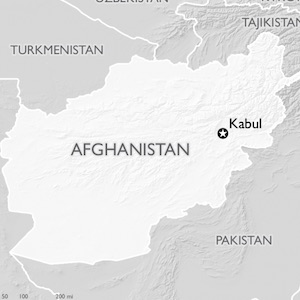
In 2019, after Trump administration officials demanded the industry declare the source of all its materials, a gem cutter complained to JCK that would be a nearly impossible task.
Take the Tucson gem shows, he said. When grabbing lapis lazuli samples from a big bucket, there was no way he could determine whether every last piece came from a mine in an area controlled by the Taliban. (Most lapis comes from Afghanistan.)
Then, as now, the Taliban was subject to U.S. sanctions. But the militant group was not on most people’s minds two years ago. Nor was the U.S. government issuing regular warnings about Taliban lapis, the way it has been doing with Burmese rubies.
Now the Taliban is on everyone’s mind, and it’s quite possible that any gem that comes from the areas of Afghanistan it controls could be illegal to import into the United States.
Adam Smith, a partner with Gibson Dunn & Crutcher and a former senior adviser to the director of the U.S. Treasury Department’s Office of Foreign Assets Control (OFAC), notes this situation is different than the one in Burma (aka Myanmar). There, just certain gem-producing entities—rather than the country as a whole—have been sanctioned. (However, those sanctions are aimed at such big targets that, as a practical matter, virtually all Burmese gems are now banned.) Now that the Taliban and the Afghan government are looking like they’ll be one and the same, the entire country might face sanctions.
“We have never had a situation where a so-identified terrorist group has taken over a country,” says Smith. “How do you treat that country? How do you treat innocent people in that country? How do you deal with food aid? There’s a lot the administration has to seriously consider.”
Many would argue—as some did last week to JCK—that banning Afghan gems will devastate the poor miners who depend on that industry. That logic could sway the Biden administration, which, in January, cited humanitarian concerns when it ended sanctions on Yemen’s Houthi rebels, an Iran-backed group that’s also been designated a terrorist organization.
On the other hand, unless there’s a sudden, and probably unlikely, warming of relations between the Taliban and the United States, most expect at least some sanctions to stay in place.
“There’s a lot of uncertainty,” says Smith. “The administration seems to be punting the question. Reducing sanctions on the Taliban is probably a nonstarter politically. The fundamental question is, will they sanction all trade from Afghanistan or they take a much more targeted approach?”
For example, what about emeralds that come from the Panjshir Valley, which has not fallen under Taliban control and is actively resisting it? One would think they’d be fine to buy; the U.S. might even encourage it, since those gems are fueling the resistance. On the other hand, if those gems are shipped from the Kabul airport, and the Taliban charges a tax, that could pose a problem.
Smith expects the government to eventually release guidance on Afghanistan trade, but until then, he suggests people err on the side of caution. Big players such as banks already view Afghanistan as a potential problem area.
“If you’re buying something that is enriching the Taliban, there’s a potential regulatory problem,” Smith says. “You want to stay clear of any transaction that might have a Taliban touch point.”
What should gem buyers do? Until there’s clarity on this topic, Jewelers Vigilance Committee CEO and president Tiffany Stevens recommends buyers follow standard anti-money–laundering practices, including conducting due diligence on suppliers and checking the OFAC list to see which sellers are subject to sanctions.
So, whether we like it or not, and whether it’s practical or even the right thing to do or not, future buyers at Tucson may start inquiring about the origin of those big barrels of lapis. And some might just decide it’s not worth it.
Image courtesy of the U.S. Department of State
Source: JCK 25-8-2021
















